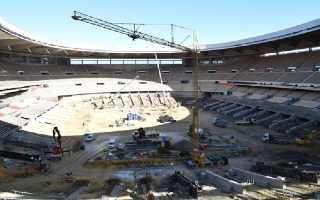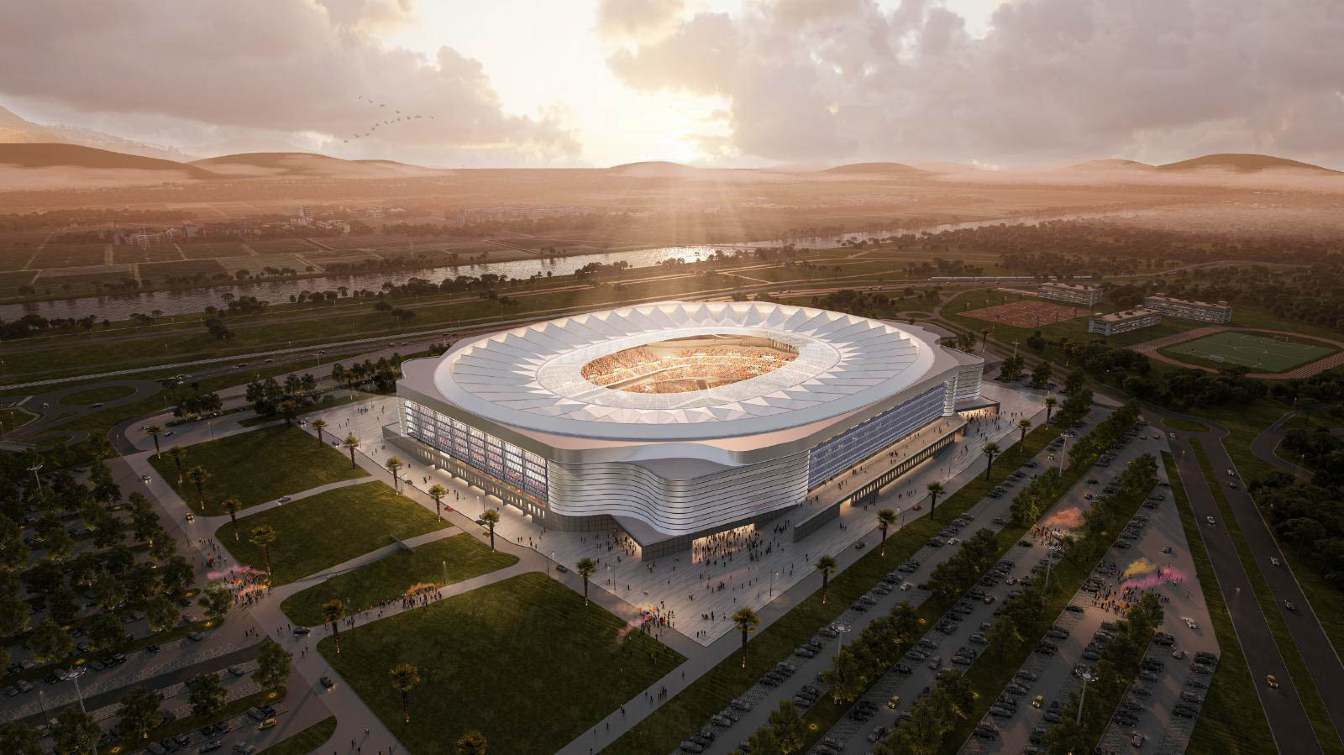Spain: No athletics track at La Cartuja! New stands soon
source: StadiumDB.com; author: Jakub Ducki
 Estadio de la Cartuja is undergoing a major upgrade that will dramatically change its functionality. The removal of the athletics track and the construction of new stands will bring fans closer to the action on the pitch, and the whole thing prepares the stadium for upcoming sporting events.
Estadio de la Cartuja is undergoing a major upgrade that will dramatically change its functionality. The removal of the athletics track and the construction of new stands will bring fans closer to the action on the pitch, and the whole thing prepares the stadium for upcoming sporting events.
Advertisement
End of athletics track
One of the most visible changes at Estadio La Cartuja is the complete removal of the athletics track. This decision has allowed the level of the pitch to be lowered by around five metres to allow for the construction of a new lower ring of stands. This will allow fans to watch matches from an even closer distance.
Work is concentrated in various areas of the stadium with heavy machinery, cranes and hundreds of workers. In the place of the former running track, new foundations and pillars have appeared, which will form the basis for the new stands. The changes are not only aesthetically pleasing, but above all functional. The construction of the new stands focuses on the lower ring, comprising the stands behind the goals and the side sectors. Work on the stadium facilities, including the refurbishment of toilets, catering areas and access to the new stands, is already at an advanced stage and is expected to be completed in the coming weeks.
The main aim of the upgrade is to increase the capacity of the stadium to more than 70,000 seats, making Estadio Olímpico de Sevilla the third largest stadium in Spain, after Santiago Bernabéu and Camp Nou. This change is crucial in the context of the upcoming World Cup 2030, where the Sevilla stadium is expected to play a major role.
Tweet El Correo de Andalucía https://x.com/elcorreoweb/status/1886006714262028500
— El Correo de Andalucía (@elcorreoweb) May 16, 2024
Costly but necessary investment
The renovation of the stadium is an investment with a total budget of €15 million and the construction company Heliopol is responsible for carrying out the work. The project is being overseen by the Seville Regional Ministry of Culture and Sport, headed by Patricia del Pozo. So far, the work is on schedule, which is crucial in view of the upcoming deadlines.
However, this is only the beginning. The second phase, planned for 2027-2028, includes further improvements to the stadium's exterior, such as the expansion of the car parks to accommodate more than 12,000 seats with photovoltaic roofing, the development of the area around the stadium for cultural and sporting events, and improvements to the road infrastructure, including the construction of new roundabouts and the widening of access roads. The total budget for these works is around €100 million.
 © Junta de Andalucía| The new stadium in Seville will be adapted for football matches, benefiting both local clubs during their own investments.
© Junta de Andalucía| The new stadium in Seville will be adapted for football matches, benefiting both local clubs during their own investments.
Stadium ready for future
Estadio La Cartuja is preparing not only for football festivities. The stadium is also set to become an arena for major music concerts, such as performances by Manuel Carrasco and Lola Índigo. What's more, Real Betis is planning to temporarily move its league matches to Cartuja while Estadio Benito Villamarín is upgraded for the 2025-2027 seasons.
In addition, there are plans to improve the accessibility of the stadium. The construction of the Sevilla Metro Line III is expected to be completed by 2030, making it much easier to get to sporting and cultural events. A Cercanías station near the stadium is also under consideration.
Advertisement

 StadiumDB
StadiumDB